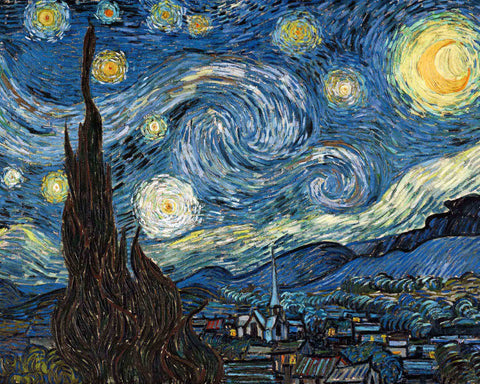Unveiling the Mysteries: Unknown Facts About Vincent Van Gogh's Starry Night
Vincent Van Gogh's Starry Night is undoubtedly one of the most recognizable and celebrated paintings in the world. Its swirling sky, vibrant colors, and expressive brushwork continue to captivate art enthusiasts and scholars alike. While many art lovers are familiar with the iconic masterpiece, there are some lesser-known facts that add an extra layer of intrigue to this remarkable work. Join us as we delve into the secrets and mysteries hidden within the strokes of Starry Night.
1). Inspired by a View from an Asylum Window:
Vincent Van Gogh created Starry Night during his time at the Saint-Paul-de-Mausole asylum in Saint-Rémy-de-Provence, France. The painting's mesmerizing depiction of a nocturnal sky was inspired by the view he had from his room's window. Van Gogh's restricted view, due to the iron bars, influenced the compressed and intensified perspective seen in the painting.
2). Symbolic Cypress Trees:
The presence of tall, dark cypress trees in Starry Night is not merely an artistic choice. Cypress trees held significant meaning for Van Gogh, as they were often associated with death, mourning, and eternity. Their prominent presence in the painting suggests a connection between the earthly and the celestial realms, bridging the gap between life and death.
3). Astronomical Accuracy:
While Starry Night may seem like a fantastical portrayal of the night sky, Van Gogh incorporated a remarkable level of astronomical accuracy into the painting. Researchers have analyzed the stars depicted in the artwork and determined that they represent the exact positions of celestial bodies as they would have appeared on the night of June 19, 1889.
4). Van Gogh's Turbulent State of Mind:
Starry Night reflects Van Gogh's emotional turmoil and the struggles he faced during his time in the asylum. The swirling patterns in the sky and the expressive brushstrokes convey a sense of unease, restlessness, and inner turmoil. The painting serves as a visual representation of Van Gogh's mental state and his ongoing battle with mental illness.
5). Multiple Versions of Starry Night:
Contrary to popular belief, Van Gogh actually painted several versions of Starry Night. The most famous version, now housed in the Museum of Modern Art (MoMA) in New York City, was completed in 1889. However, there are other renditions, such as the one painted in 1888 that is displayed at the Musée d'Orsay in Paris. These variations allow art enthusiasts to explore the evolution of Van Gogh's artistic style and his continuous fascination with the nocturnal sky.
6). Influence of Japanese Art:
Van Gogh was heavily influenced by Japanese art, particularly ukiyo-e prints, which are characterized by their bold colors, flattened perspective, and dramatic compositions. This influence is evident in Starry Night, with its vibrant color palette, stylized forms, and flattened depiction of space. Van Gogh's incorporation of these Japanese artistic elements adds a unique dimension to the painting's overall aesthetic.
Vincent Van Gogh's Starry Night continues to inspire and captivate art lovers worldwide. Beyond its immediate visual appeal, the painting holds hidden layers of symbolism and personal expression. The swirling sky, symbolic cypress trees, and Van Gogh's turbulent mental state all contribute to the painting's enduring allure. As we uncover these lesser-known facts, we gain a deeper appreciation for the genius and complexity of one of art history's most cherished masterpieces. Starry Night stands as a testament to Van Gogh's unparalleled artistic vision and his ability to transform personal struggles into timeless works of art.
You can read more about Starry Night here: https://www.theartnewspaper.com/2023/06/09/ten-surprises-about-van-goghs-starry-night




Comments (0)
There are no comments for this article. Be the first one to leave a message!